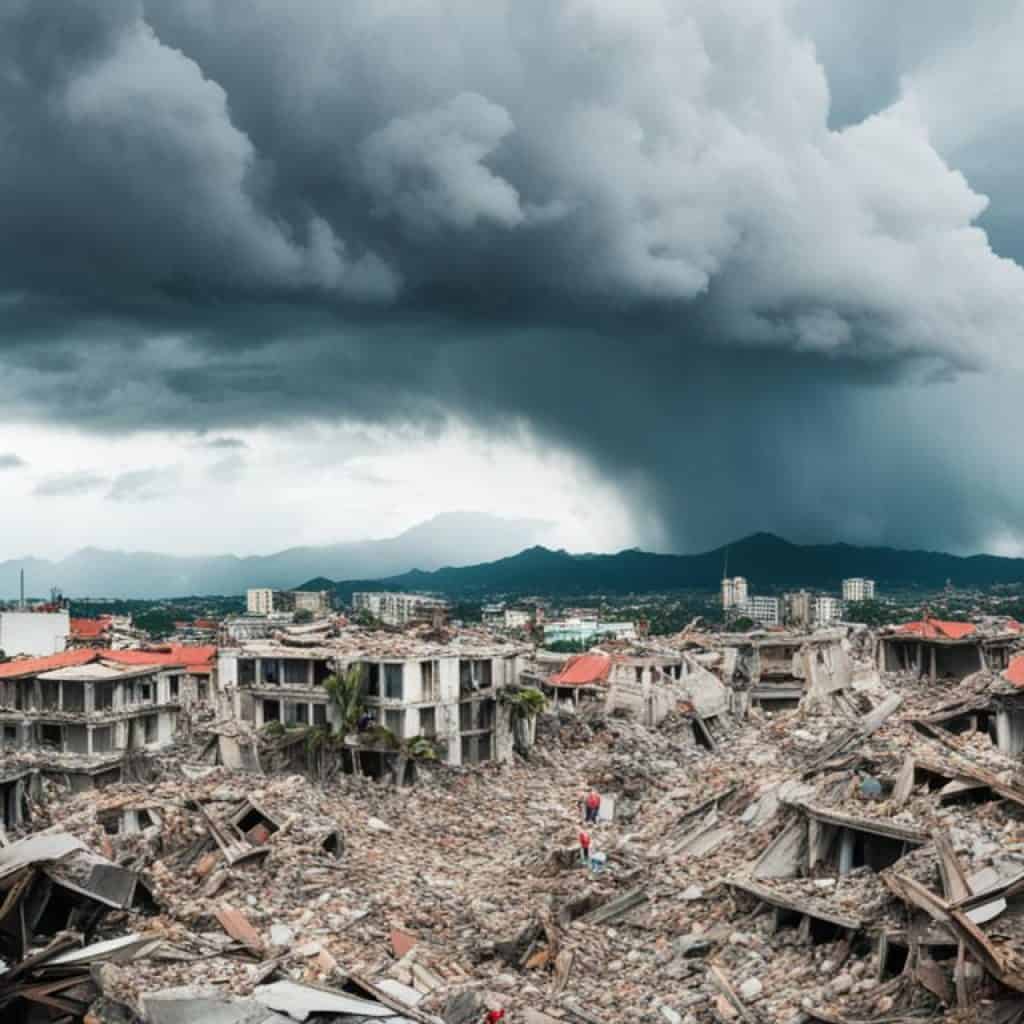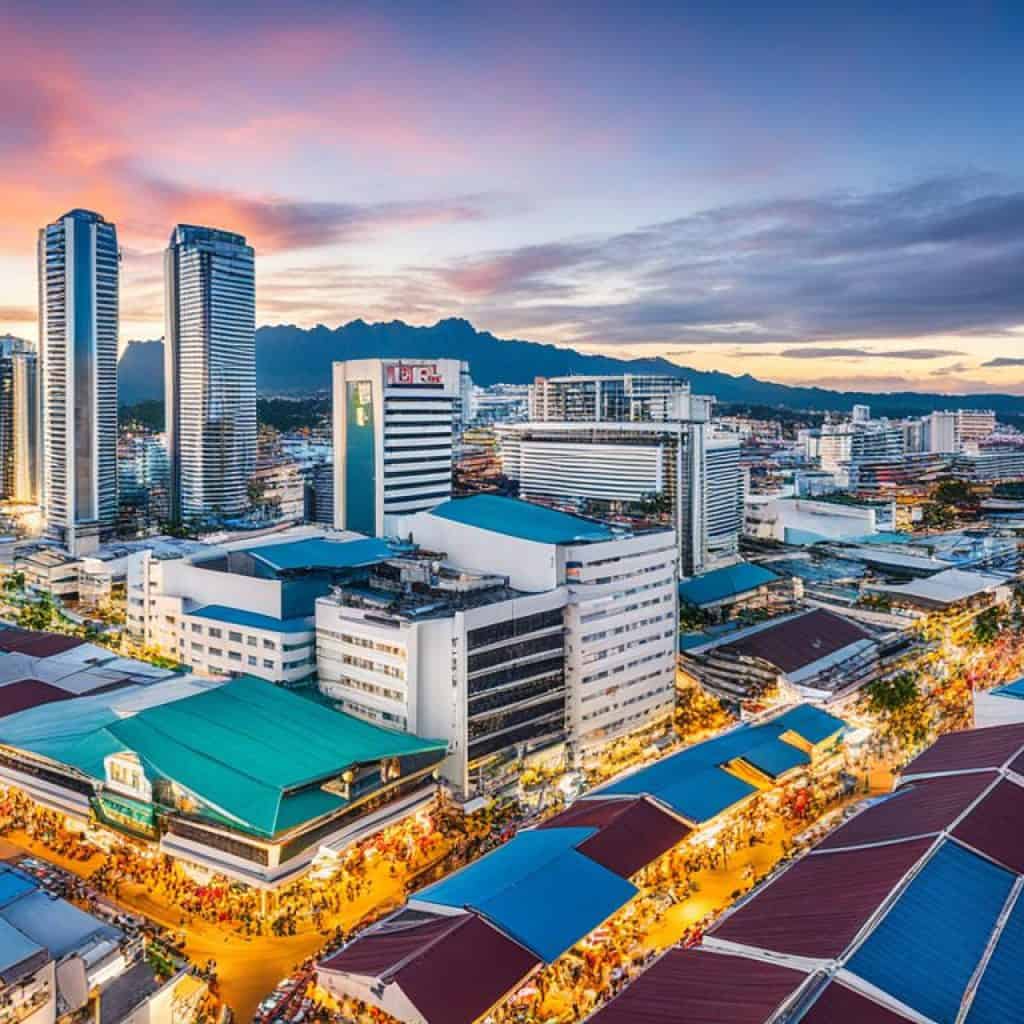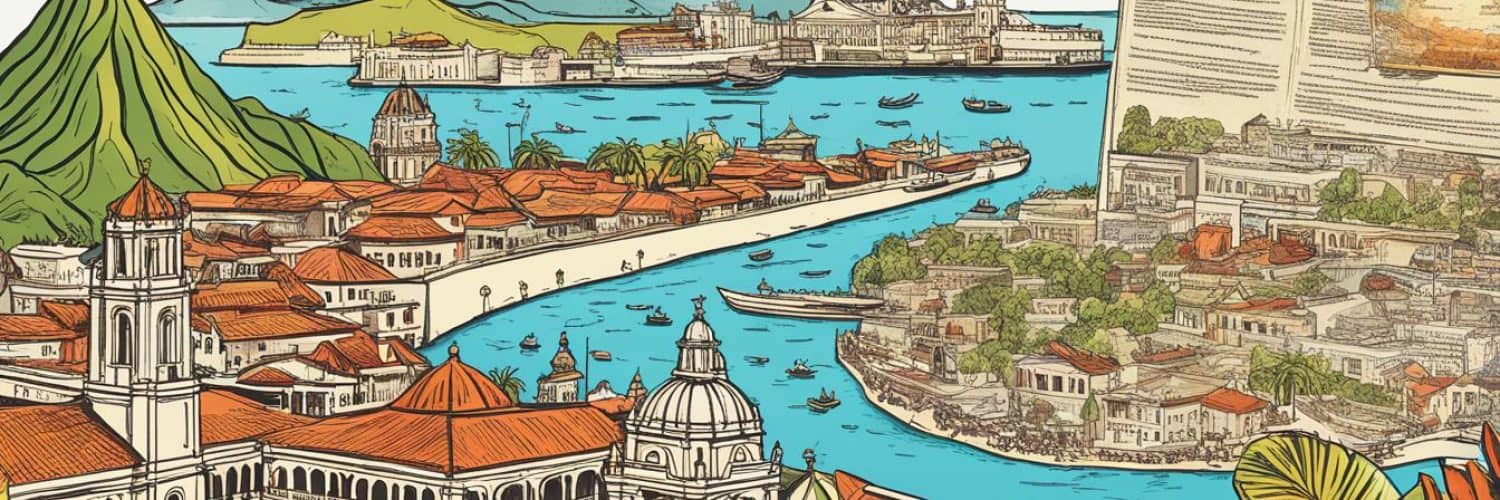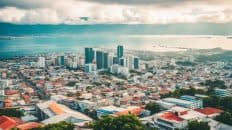Have you ever wondered about the intriguing history of Cebu? Beyond its stunning beaches and vibrant city life lies a fascinating timeline of events that have shaped the culture and identity of this Philippine province. From its pre-colonial days as a thriving center of trade to the Spanish colonization, World War II, and beyond, Cebu’s past is filled with captivating stories and significant milestones that continue to define its present. Let’s embark on a journey through time and uncover the rich history of Cebu.
Key Takeaways:
- Cebu has a history that predates Spanish colonization, making it a region of cultural significance.
- The pre-colonial era in Cebu saw the island thrive as a center of trade, attracting merchants from across Asia.
- Cebu’s well-organized social structure, led by datus, and the fascinating culture of the pintados made it a unique and vibrant society.
- The arrival of Magellan and the subsequent Spanish colonization marked a transformative period in Cebu’s history.
- Cebu’s history encompasses significant events such as the Philippine Revolution, American colonization, and World War II, which shaped its present-day identity.
Pre-Colonial Cebu: A Thriving Center of Trade
Even before the Spanish colonization, Cebu was already a hub of trade in the region. Traders from China, Malaysia, Japan, India, and other parts of Asia frequented the island for its vibrant marketplace. Cebu had an organized social structure led by datus, who governed their communities and maintained trade relations with foreign merchants. The pintados, as the people of Cebu were called, were known for their elaborate tattoos and wore gold jewelry. The island was a melting pot of cultures and a center of economic activity long before the arrival of the Spanish.
Trade played a vital role in the pre-colonial society of Cebu, with the island becoming a major center of commerce. Merchants from across Asia flocked to Cebu to engage in the exchange of goods and ideas. The bustling marketplace was a testament to the island’s economic significance and its role as a gateway between different cultures.
The trade networks extended beyond Asia, with Cebu’s influence reaching as far as the Middle East and Europe. Goods such as silk, ceramics, spices, and precious metals were traded, contributing to the island’s prosperity.
The datus, who were both political and economic leaders, ensured the smooth operations of trade activities. They established regulations, resolved disputes, and facilitated negotiations with foreign traders. The datus held considerable power and played a critical role in maintaining Cebu’s position as a center of trade.
“Cebu’s pre-colonial society thrived on trade, attracting merchants from all corners of Asia. The island became a melting pot of cultures, fostering a vibrant marketplace and enriching the local community.”
The pintados, with their intricate tattoos and gold jewelry, were not only a distinctive feature of Cebuano culture but also served as a testament to the island’s economic prosperity. Through their elaborate body art and adornments, the pintados showcased their wealth and social status.
Pre-colonial Cebu’s role as a center of trade laid the foundation for its future growth and development. The vibrant marketplace and cultural exchange that took place on the island shaped its identity and set the stage for its subsequent historical chapters.
| Key Features of Pre-Colonial Cebu |
|---|
| An extensive network of trade connections with merchants from China, Malaysia, Japan, India, and other parts of Asia. |
| An organized social structure led by datus, who maintained trade relations and governed their communities. |
| The presence of pintados, heavily tattooed individuals adorned with gold jewelry, symbolizing Cebu’s economic prosperity. |
| Cebu’s position as a hub of trade, serving as a gateway to various cultures and influencing trade routes beyond Asia. |
Spanish Colonization: The Arrival of Magellan and Legazpi
The Spanish colonization of Cebu began with the arrival of Ferdinand Magellan in 1521. Magellan and his troops were warmly welcomed by Rajah Humabon’s community, which converted to Christianity. However, Magellan’s attempt to conquer the neighboring island of Mactan led to his defeat and death at the hands of Lapulapu, the local chieftain. It was not until 1566 that Manuel Lopez de Legazpi arrived in Cebu and established Spanish rule.
Under the leadership of Legazpi, Catholic churches were built, institutions like schools and hospitals were established, and trade flourished. The arrival of Legazpi marked the beginning of a new chapter in Cebu’s history under Spanish influence.
In 1521, Ferdinand Magellan arrived in Cebu and was welcomed by Rajah Humabon’s community. However, Magellan’s encounter with Lapulapu in Mactan ended in his defeat and death.
The Spanish colonization of Cebu left a lasting impact on the island’s culture, language, and traditions. Today, Cebu is dotted with Spanish-era architectural landmarks such as the Magellan’s Cross and the Cebu Metropolitan Cathedral, which serve as reminders of Cebu’s colonial past.
The Legacy of Spanish Colonization in Cebu
- Introduction of Christianity and the construction of Catholic churches
- Establishment of educational institutions and healthcare facilities
- Expansion of trade and commerce
- Influence on culture, language, and traditions
Cultural Significance: Festivals and Traditional Practices
Cebu is known for its rich cultural heritage that is celebrated through vibrant festivals and traditional practices. Fiestas are an integral part of Cebuano culture, showcasing the deep-rooted traditions and cultural identity of the Cebuano people. Each town and city in Cebu has its own unique celebration, making the province a melting pot of diverse festivities.
One of the most well-known festivals in Cebu is the Sinulog Festival, held in honor of the Santo Niño. This grand celebration features colorful and lively street parades, dance performances, and religious processions. It attracts both locals and tourists who come to witness the spectacular display of faith, culture, and creativity.
Another notable festival is the Kadaugan sa Mactan, which commemorates the victory of Lapulapu over Ferdinand Magellan in the Battle of Mactan. This festival portrays the bravery and heroism of Lapulapu through reenactments and cultural presentations.
During the Pasko sa Sugbo (Christmas in Cebu) festivities, the province comes alive with dazzling lights, festive decorations, and Christmas-themed events. It is a time of joyous celebration and reflection for the Cebuano community.
The Tres de Abril festival in the municipality of Dalaguete is a tribute to the town’s patron saint, St. Isidore the Laborer. It features a street dancing competition, beauty pageant, and various cultural activities.
“Festivals in Cebu are not just mere celebrations; they are expressions of our cultural significance, a way for us to honor our traditions, unite our communities, and showcase our creativity to the world.” – Local Cebuano
These festivals not only bring joy and entertainment, but they also serve as a reminder of Cebu’s cultural heritage and its people’s resilience. They provide a platform for communities to come together, celebrate their shared traditions, and pass them down to future generations.
Additionally, Cebu is home to various traditional practices that are deeply ingrained in the daily lives of its people. From traditional music and dance to culinary traditions and religious customs, these practices highlight the unique cultural character of Cebu.
The cultural significance of festivals and traditional practices in Cebu cannot be overstated. They serve as a source of pride for the Cebuano people and contribute to the preservation and promotion of their cultural identity.
The Sinulog Festival: A Celebration of Faith and Culture
The Sinulog Festival is undoubtedly the most famous festival in Cebu. It is a grand celebration held every January in honor of the Santo Niño, the child Jesus. The festival’s highlight is the Sinulog Grand Parade, where participants in vibrant costumes dance and perform to the beat of drums and traditional music. This religious and cultural event attracts thousands of pilgrims, devotees, and tourists from all over the world.
Kadaugan sa Mactan: Commemorating Mactan’s Victory
The Kadaugan sa Mactan festival is a commemoration of the historic Battle of Mactan, where Lapulapu and his warriors defeated Ferdinand Magellan. The festival features reenactments of the battle, cultural presentations, food fairs, and other activities that honor Lapulapu as a national hero.
Architectural Heritage: Churches and Historical Landmarks
Cebu, known for its rich history, is home to a plethora of architectural landmarks that showcase its vibrant past. These historical treasures, including churches and other significant sites, are a testament to the cultural heritage of the region.
Magellan’s Cross
One of the most iconic landmarks in Cebu is Magellan’s Cross. Located near the Basilica Minore del Santo Niño, it holds immense historical and religious significance. Magellan’s Cross is a symbol of the arrival of Christianity in the Philippines and serves as a constant reminder of Cebu’s colonial past. The cross is housed within a chapel and draws visitors from all over the world who come to pay homage and appreciate its historical significance. Its preservation showcases the architectural heritage and religious prominence of Cebu.
Fort San Pedro
Another remarkable architectural gem in Cebu is Fort San Pedro. Built in the 16th century, it holds the esteemed title of being the oldest fort in the Philippines. Initially built as a defensive structure against pirates and invaders, Fort San Pedro has witnessed the transformation of Cebu over the centuries. Today, it stands as a historical landmark that preserves the city’s history and showcases its architectural prowess. This fort serves as a tangible reminder of Cebu’s perseverance and resilience in protecting its land during colonial times.
Cebu Metropolitan Cathedral
The Cebu Metropolitan Cathedral stands prominently in the heart of the city, with its intricate architecture capturing the attention of visitors and locals alike. A symbol of the strong Catholic influence in the region, this grand cathedral represents the religious heritage of Cebu. Its magnificent facade and captivating interior design highlight the architectural mastery that has been passed down through generations. The Cebu Metropolitan Cathedral serves as a gathering place for worship and a testament to the enduring faith of the Cebuano people. Its architectural beauty is a testament to Cebu’s rich cultural and religious history.
The architectural heritage of Cebu is a reflection of its storied past. Through these churches and historical landmarks, visitors and residents alike are transported back in time to witness the city’s evolution. These sites stand as tangible reminders of Cebu’s colonial history and the individuals who shaped the region. As Cebu continues to celebrate its rich heritage, it pays homage to the cultural significance and architectural marvels that contribute to its unique identity.
| Architectural Landmark | Significance |
|---|---|
| Magellan’s Cross | Symbolizes the arrival of Christianity in the Philippines |
| Fort San Pedro | Oldest fort in the Philippines; served as a defense against pirates and invaders |
| Cebu Metropolitan Cathedral | Represents the strong Catholic influence in Cebu |
Economic Growth: Trade and Development
Cebu has been experiencing remarkable economic growth, solidifying its position as a major center for trade, commerce, and industry in the Philippines. The province’s strategic location and favorable business climate have attracted numerous multinational companies to establish their presence in Cebu. Notably, the business process outsourcing (BPO) sector in Cebu has flourished, creating employment opportunities and driving economic expansion.
The vibrant tourism industry is another key driver of economic growth in Cebu. The province boasts beautiful beaches, historical landmarks, and cultural attractions that draw visitors from around the world. From relaxing on pristine shores to exploring ancient ruins, tourists are captivated by the rich heritage and natural beauty of Cebu.
Furthermore, the government of Cebu has undertaken various development projects to further enhance the province’s economic growth. These initiatives focus on improving infrastructure, such as transportation systems and connectivity, to facilitate efficient trade and commerce. Investments in the expansion of airports, seaports, and road networks have positioned Cebu as a gateway for both domestic and international trade.
The commitment to sustainable development is reflected in Cebu’s initiatives to balance economic growth with environmental preservation. The province recognizes the importance of preserving its natural resources while capitalizing on its economic potential.
Cebu’s economic growth, driven by trade and commerce, has transformed the province into a vibrant and dynamic city. Its strategic location, thriving business sectors, and government support for development projects have positioned Cebu as a key player in the global economy.
Investing in Cebu: Opportunities for Businesses
The economic growth in Cebu presents a wealth of opportunities for businesses looking to expand or establish their presence in the region. With its well-developed infrastructure, skilled workforce, and supportive business environment, Cebu provides a conducive ecosystem for business growth.
The province’s business process outsourcing (BPO) sector, in particular, offers significant potential for investment. Cebu is known for its talented workforce proficient in English, making it an attractive destination for companies looking to outsource their operations. The BPO industry has been a major contributor to Cebu’s economic growth, creating jobs and attracting foreign investments.
Additionally, Cebu’s strategic location in the heart of the Philippines provides businesses with access to both domestic and international markets. The province’s well-connected transportation systems, including airports and seaports, facilitate efficient movement of goods and services. This connectivity reinforces Cebu’s position as a vital trading hub in the country.
Moreover, Cebu’s commitment to sustainable development and environmental preservation aligns with the growing global demand for environmentally conscious business practices. Investing in Cebu not only presents economic opportunities but also allows businesses to contribute to the sustainable development of the region.
Key Industries in Cebu
| Industry | Contribution to Cebu’s Economy |
|---|---|
| Business Process Outsourcing (BPO) | Significant employment generation and foreign investment |
| Tourism | Revenue generation, job creation, and promotion of local culture |
| Manufacturing | Production of various goods, including electronics, furniture, and garments |
| Real Estate and Construction | Demand for commercial and residential properties, infrastructure development |
| Agribusiness | Food production, agricultural processing, and export of products |
Cebu’s thriving industries and investment opportunities make it an attractive destination for businesses seeking growth and expansion. The province’s economic growth, coupled with its commitment to sustainable development, highlights its potential for long-term business success in the global context.
World War II and Japanese Occupation
Cebu, like the rest of the Philippines, was deeply impacted by World War II and the Japanese occupation. During this period, Cebu served as a crucial Japanese base, used as a launching point for their operations in the region. The people of Cebu faced immense hardships and endured atrocities under Japanese rule, with many sacrificing their lives in the fight for freedom. The scars left by the war can still be seen on the city today, a somber reminder of the struggles endured by its residents.
However, the Cebuanos displayed remarkable resilience and determination in rebuilding their lives and contributing to the post-war reconstruction of the country. Despite the devastation caused by the war, they never lost hope and worked tirelessly towards creating a better future for themselves and their families.
“The war may have brought immense suffering, but it also revealed the indomitable spirit of the people of Cebu. They emerged from the darkness of war with an unwavering commitment to rebuilding their lives and fostering a sense of community. The tenacity and courage they displayed serve as an enduring testament to their strength.”
As Cebu began the process of healing and reconstruction, the resilience of its people became evident in the community’s collective efforts. The city gradually rose from the ashes, with the strong determination of its residents fueling the rebuilding process. Their contributions, alongside those of countless individuals and organizations, shaped the post-war era and laid the foundation for the vibrant city we see today.
The scars of World War II serve as a reminder of the importance of peace and unity. They also highlight the perseverance of the Cebuanos, whose unwavering spirit helped them rise above the challenges of the past. Today, Cebu stands as a testament to the power of resilience and the triumph of the human spirit.

Post-War Reconstruction and Philippine Independence
After the devastation of World War II, Cebu faced the monumental task of rebuilding itself. The city and its infrastructure lay in ruins, but the spirit of its people remained resilient. Committing to a future of growth and progress, Cebu embarked on a period of post-war reconstruction.
Efforts were made to rebuild and restore the city, with a focus on reviving the economy and creating opportunities for its citizens. The scars of war served as a reminder of the importance of unity and resilience in rebuilding a community.
The history of Cebu’s post-war reconstruction is a testament to the indomitable spirit of its people, who worked together to rebuild their city from the ground up.
In 1946, the hard-fought battle for Philippine independence culminated in the country gaining its freedom from the United States. This historic moment marked a new era in Cebu’s history, as the city played an active role in the nation’s journey towards nationhood.
Cebuanos actively participated in the political and social changes that swept across the country, shaping the direction of the newly independent Philippines. The post-war years were a time of rebuilding, renewal, and nation-building for Cebu.
The reconstruction efforts paved the way for Cebu’s continued growth and development. The city’s resilience and determination laid the foundation for its transformation into a modern metropolis, while still preserving its rich cultural heritage.
The journey from the hardships of war to the triumph of independence has become an integral part of Cebu’s identity. It serves as a constant reminder of the city’s ability to overcome challenges and emerge stronger than ever before.
Today, Cebu stands as a thriving city, symbolizing the indomitable spirit of its people. Cebuanos continue to preserve their heritage, celebrate their history, and contribute to the ongoing growth and development of their beloved city.
Cultural Preservation: Heritage Sites and Conservation Efforts
Recognizing the importance of cultural preservation in Cebu, significant efforts have been made to protect and safeguard the city’s historic sites. Various heritage sites have been identified and designated for conservation, ensuring that they can be enjoyed by future generations.
Cebu is home to a multitude of heritage sites that hold great historical and cultural significance. These sites showcase the rich tapestry of Cebu’s past and serve as a testament to its vibrant history. From ancient structures to colonial-era buildings, these sites provide a glimpse into the city’s diverse heritage.
Efforts to conserve these heritage sites are carried out by both government bodies and non-profit organizations. Conservation projects focus on preserving the architectural integrity of these sites while ensuring their accessibility and sustainability for future generations. Through careful restoration and maintenance, these sites can continue to tell the stories of the past and contribute to Cebu’s cultural identity.
Conservation efforts also extend to raising awareness and educating the public about the significance of these heritage sites. By promoting their importance, both locals and tourists are encouraged to appreciate and respect the cultural heritage of Cebu. This education plays a vital role in fostering a sense of pride and responsibility in preserving these sites for the future.
Furthermore, collaboration between government bodies, non-profit organizations, and communities has been pivotal in the success of conservation efforts. By working together, these entities can pool resources, knowledge, and expertise to effectively preserve and promote Cebu’s cultural heritage.
Preserving Cebu’s heritage sites is not only about conserving physical structures but also safeguarding the stories, traditions, and memories associated with them. Through these conservation efforts, future generations can continue to learn, appreciate, and be inspired by the rich history of Cebu.
| Heritage Site | Description | Conservation Efforts |
|---|---|---|
| Magellan’s Cross | A symbol of Cebu’s Christian heritage, marking the arrival of Ferdinand Magellan in 1521. | Regular maintenance and preservation, ensuring the cross remains intact and accessible to the public. Public education programs to raise awareness about its significance. |
| Fort San Pedro | The oldest fort in the Philippines, built in the 16th century to protect against invaders. | Structural restoration and maintenance. Historical exhibits and guided tours to educate visitors about its historical significance. |
| Colon Street | The oldest street in the Philippines, lined with historical buildings and landmarks. | Preservation of architectural integrity through restoration and maintenance. Public campaigns to promote the street’s historical value. |
| Yap-Sandiego Ancestral House | A centuries-old house showcasing traditional Filipino-Spanish architecture and artifacts. | Restoration and maintenance of the house. Guided tours and educational programs to highlight its cultural significance. |
Cebu’s Continuing Legacy: Modernity and Growth
Cebu’s rich history has laid the foundation for its present and future as a thriving metropolis. The city has successfully embraced modernity while preserving its cultural heritage, creating a unique blend that defines modern Cebu. As one of the fastest-growing cities in the Philippines, Cebu continues to attract both local and international investments, contributing to its remarkable growth and development.
The spirit of the Cebuanos, characterized by hard work and resilience, has been pivotal in shaping the city’s dynamic and progressive environment. From its origins as a center of trade in the pre-colonial era to its transformation under Spanish rule, Cebu has continuously evolved while staying rooted in its cultural legacy.
This modern Cebu is a bustling metropolis, teeming with economic opportunities. Its thriving economy and strategic location have made it a hub for various industries, including business process outsourcing (BPO), tourism, and manufacturing. The city’s vibrant cultural scene, with its festivals and traditional practices, further enriches the modern urban experience.
One of the key drivers of Cebu’s growth and development is its ability to adapt and innovate. The city’s infrastructure, both physical and digital, has kept pace with its expanding industries, creating an environment conducive to business and investment.
Cebu’s Economic Growth and Development
Cebu’s flourishing economy can be attributed to its strategic geographical location and its skilled workforce. The city’s accessibility has made it an attractive destination for investors seeking to tap into the growing Philippine market. Cebu’s business-friendly environment and government support further contribute to its allure as a global business hub.
“Cebu is not just a gateway to the Philippines; it is a destination in itself, offering a vibrant business ecosystem and a high quality of life.” – Juan Carlos Aviles, Chairman of the Cebu Chamber of Commerce and Industry
Currently, Cebu thrives as a major center for the BPO industry, with numerous multinational companies establishing operations in the city. The skilled workforce, coupled with a strong English proficiency, has made Cebu an ideal location for outsourcing services, such as IT support, customer service, and back-office operations.
Tourism also plays a significant role in Cebu’s economic growth. The city’s pristine beaches, historical sites, and vibrant culture attract millions of visitors each year. Tourism-related industries, such as hospitality, transportation, and entertainment, contribute to job creation and revenue generation.
Investing in Infrastructure and Sustainability
Cebu’s commitment to sustainable development is evident in its investments in infrastructure and environmental preservation. The city has embarked on various projects aimed at improving transportation, utilities, and public spaces, creating a more livable and resilient urban environment.
Transportation infrastructure, such as roads, bridges, and airports, continues to be expanded and upgraded to support economic growth and connectivity. The Mactan-Cebu International Airport, the second busiest airport in the Philippines, has undergone significant enhancements, accommodating the increasing number of domestic and international flights.
Efforts are also being made to preserve Cebu’s natural resources and promote sustainable tourism. The city takes pride in its protected areas and ecotourism sites, which attract nature enthusiasts and promote environmental conservation.
Looking Ahead
The future of Cebu looks promising as it continues to build on its legacy of growth and development. With its dynamic business environment, rich cultural heritage, and commitment to sustainability, the city is poised to play an even more significant role in the global context. Cebu’s continuing legacy of embracing modernity while preserving its heritage ensures that it remains a vibrant and progressive city for generations to come.
| Key Factors | Contributing to Growth and Development |
|---|---|
| Strategic Location | Accessible to domestic and international markets |
| Skilled Workforce | Attracts investments in various industries |
| Business-Friendly Environment | Supports the growth of local and international businesses |
| Investment in Infrastructure | Enhances transportation, utilities, and public spaces |
| Sustainable Development | Promotes conservation of natural resources and eco-tourism |

The Importance of Cebu’s History in Shaping its Identity
The history of Cebu is not merely a collection of past events; it is the foundation on which the city’s identity is built. Understanding and appreciating the importance of Cebu’s history allows its people, known as Cebuanos, to connect to their cultural heritage and preserve their traditions for future generations.
“The stories of bravery, resilience, and determination from Cebu’s history serve as a source of inspiration for the future.”
Cebu’s history is a tapestry woven with tales of bravery, resilience, and determination. These stories, handed down through generations, continue to inspire Cebuanos to navigate the challenges of the present and shape a brighter future for their city.
By celebrating and preserving its history, Cebu maintains a strong sense of identity. Cebuanos take pride in their roots and the rich cultural tapestry that has been shaped by centuries of diverse influences.
“By celebrating its history and preserving its heritage, Cebu maintains a strong sense of identity and pride in its roots.”
Cultural identity is crucial to fostering a sense of belonging and unity among the people of Cebu. The preservation of heritage sites, traditional practices, and festivals plays a vital role in nurturing this sense of identity.
Preserving Cultural Heritage
The buildings, landmarks, and artifacts that stand as testaments to Cebu’s past are essential for preserving its cultural heritage. These symbols connect Cebuanos to their history, allowing them to reflect on their roots and the forces that have shaped their identity.
The architectural heritage showcased in churches such as the Cebu Metropolitan Cathedral and historical landmarks like Magellan’s Cross gives Cebuanos a tangible link to their past. These structures are not just bricks and mortar; they are living reminders of the city’s colonial history and the influence of Spanish culture on Cebuano society.
The Cultural Tapestry of Festivals
The colorful festivals celebrated throughout Cebu are another manifestation of the city’s rich cultural identity. Events like the Sinulog Festival, Kadaugan sa Mactan, and Pasko sa Sugbo showcase the fusion of indigenous traditions and Catholic influences that define Cebuano culture.
Through vibrant street parades, dance performances, and religious processions, these festivals bring the community together and remind Cebuanos of their shared history. They serve as a platform for cultural expression, reinforcing the bond between Cebu’s past and present.
Passing Down Traditions
Preserving cultural identity necessitates the passing down of traditions from one generation to the next. Cebuanos hold dear their customs, dialects, arts, and crafts, ensuring that these aspects of their heritage remain alive and vibrant.
From the intricate designs of traditional costumes to the art of handcrafting native products, Cebuano traditions represent the ingenuity and creativity of their ancestors. By carrying on these practices, Cebuanos show reverence for their past while embracing the challenges of the future.
In conclusion, the history of Cebu plays an integral role in shaping the city’s identity. Cebuanos draw inspiration from the stories of their ancestors, celebrate their cultural heritage through festivals and traditions, and preserve their history through the conservation of architectural heritage and historical landmarks. By embracing their past, Cebuanos forge a stronger sense of identity and ensure that the unique cultural tapestry of Cebu continues to thrive.
Future Prospects: Cebu’s Role in the Global Context
Looking towards the future, Cebu has the potential to further establish itself as a global player. With its strategic location, well-developed infrastructure, and skilled workforce, the city has become a hub for various industries, including business process outsourcing (BPO), tourism, and manufacturing. Cebu continues to attract investments and collaborations from international partners, further enhancing its global standing. As it moves forward, Cebu remains committed to sustainable development, preserving its cultural heritage, and creating opportunities for its people.
As a global hub for business, Cebu offers a thriving environment for companies looking to expand their operations. Its strategic location in the heart of the Philippines makes it an ideal gateway to the Asia-Pacific region. With a well-established BPO industry, Cebu has the expertise and infrastructure to support businesses across various sectors. The city’s skilled workforce, competitive costs, and English proficiency have made it a preferred destination for outsourcing services.
Furthermore, Cebu’s tourism industry continues to experience growth, attracting visitors from around the world. The city’s beautiful beaches, vibrant festivals, and historical landmarks make it a popular destination for both leisure and business travelers. Cebu’s tourism sector contributes significantly to the local economy, creating jobs and driving investment in hospitality and related industries.
Cebu’s strategic location, well-developed infrastructure, and skilled workforce have positioned it as a global hub for business, attracting investments and collaborations from international partners.
Additionally, Cebu’s manufacturing sector has been instrumental in driving economic growth. The city has a strong manufacturing base, particularly in electronics, automotive parts, and furniture production. Cebu’s proximity to key shipping routes and its well-connected ports have made it a preferred location for manufacturing companies, allowing them to efficiently transport goods to markets around the world.
In its pursuit of sustainable development, Cebu remains committed to preserving its cultural heritage. The city takes pride in its historical landmarks, architectural heritage, and traditional practices. Efforts have been made to conserve and protect these treasures, ensuring that future generations can appreciate and learn from Cebu’s rich history.
Overall, Cebu’s future prospects as a global player are bright. The city’s strategic location, well-developed infrastructure, and skilled workforce place it at the forefront of global business and economic development. With continued investments, sustainable practices, and a commitment to preserving its cultural heritage, Cebu is poised to make a significant impact on the global stage.
Future Prospects of Cebu in Numbers:
| Industry | Contribution to Cebu’s Economy |
|---|---|
| Business Process Outsourcing (BPO) | XX% of GDP |
| Tourism | XX million international visitors per year |
| Manufacturing | XX% of total employment |
Conclusion
The history of Cebu is a captivating journey that highlights the resilience and strength of its people. From its origins as a bustling center of trade in the pre-colonial era to its transformation under Spanish rule, Cebu’s evolution has been guided by its rich cultural heritage.
The arrival of Ferdinand Magellan and the subsequent struggles during World War II are significant chapters in Cebu’s history, serving as reminders of the sacrifices made by its people in the pursuit of freedom and independence. The post-war era brought about a period of reconstruction, laying the foundation for the modern and vibrant city that Cebu is today.
As Cebu moves forward, it remains committed to preserving its cultural treasures and embracing sustainable development. The city’s architectural landmarks, festivals, and traditional practices reflect its deep-rooted identity and contribute to its unique charm. With its strategic location, well-developed infrastructure, and skilled workforce, Cebu is well-positioned to play a significant role in the global context.
Through the preservation of its history and the pursuit of sustainable growth, Cebu continues to shape its identity and future prospects. The rich tapestry of its past serves as a guiding light, inspiring Cebuanos to forge ahead with determination and pride. Cebu’s journey is far from over, and its history will continue to shape its legacy for generations to come.


















Add comment